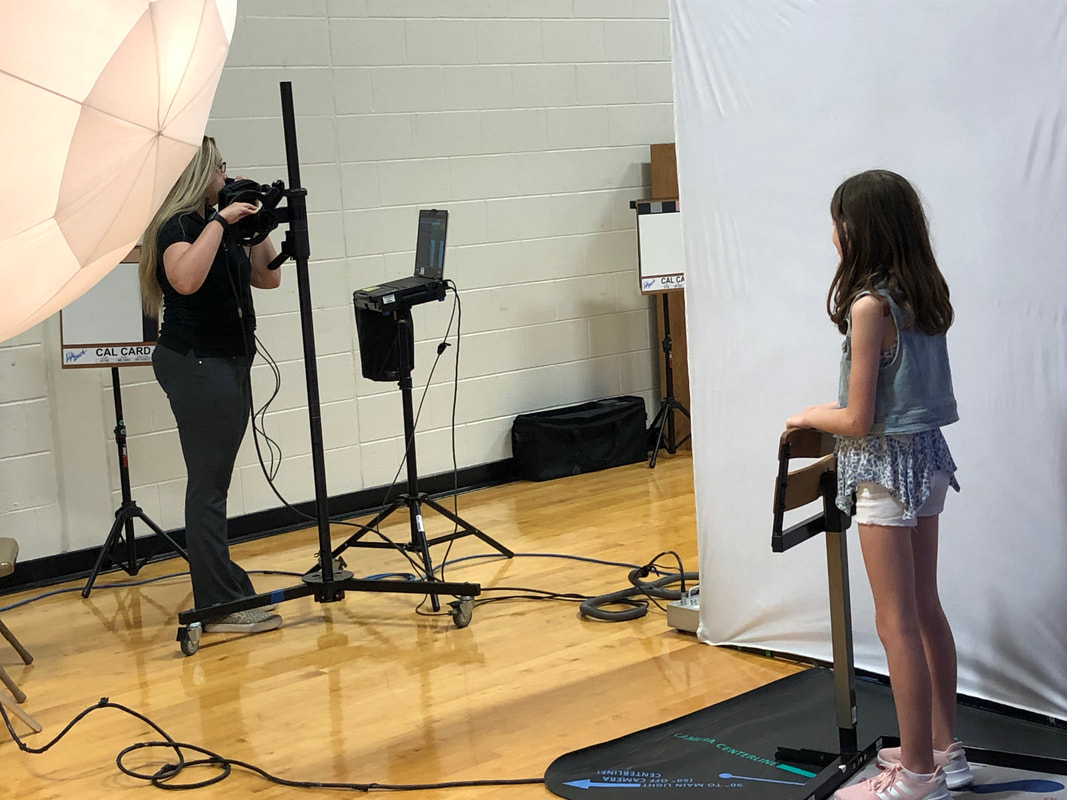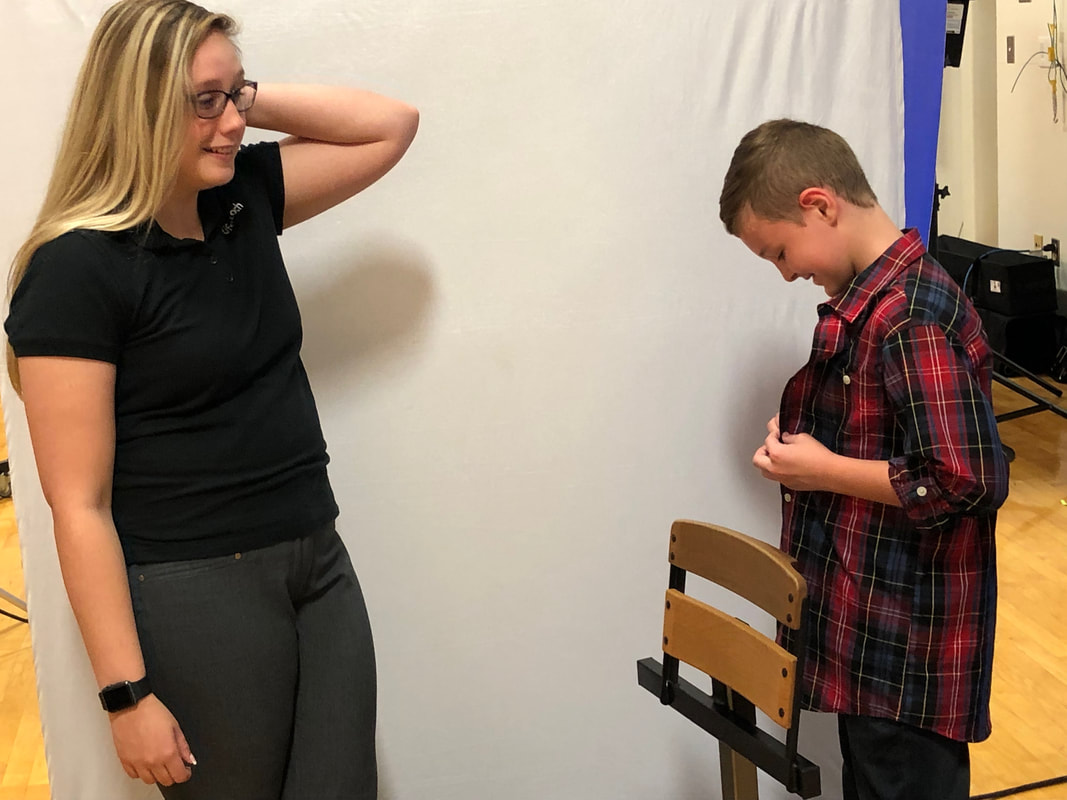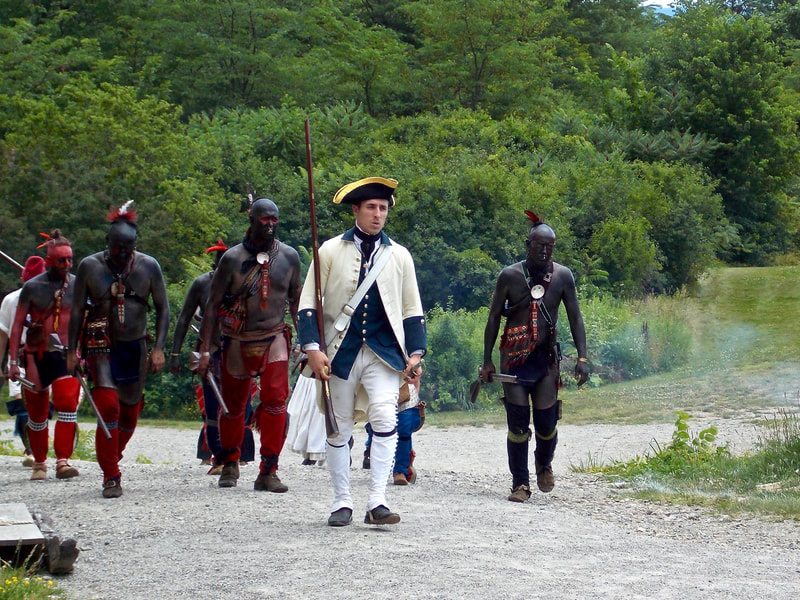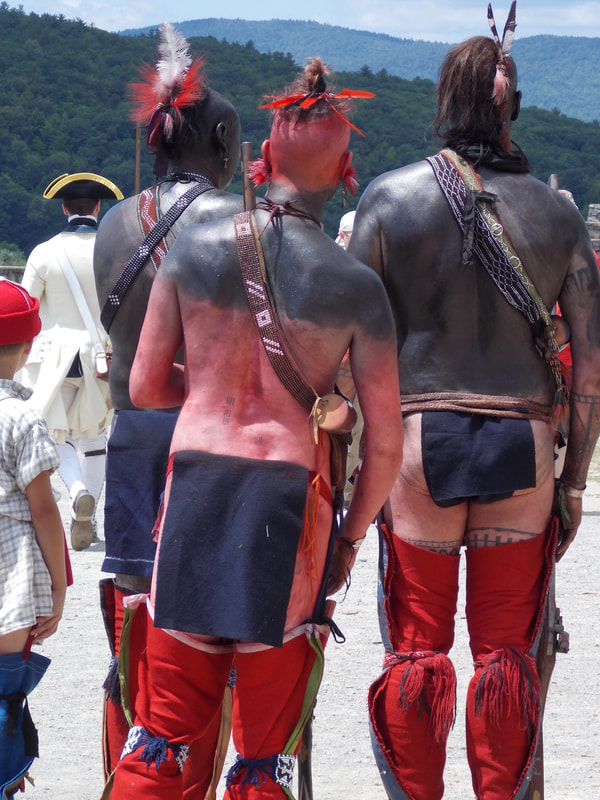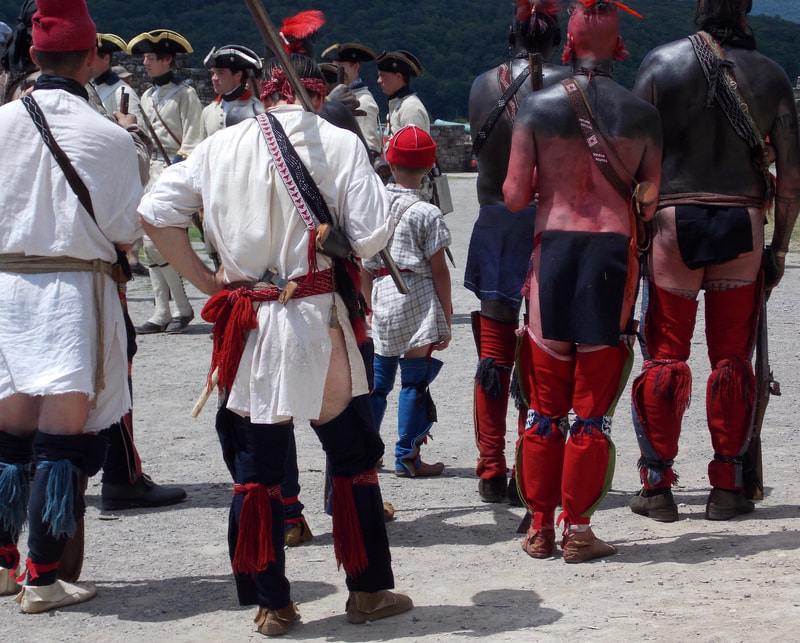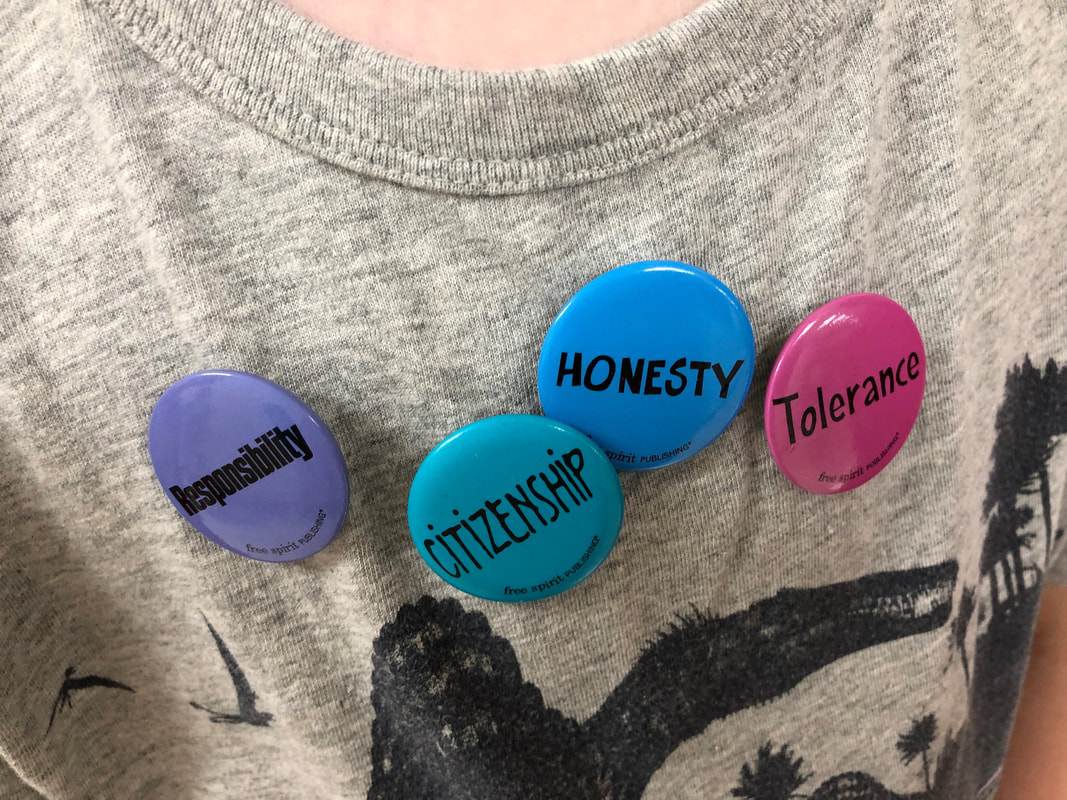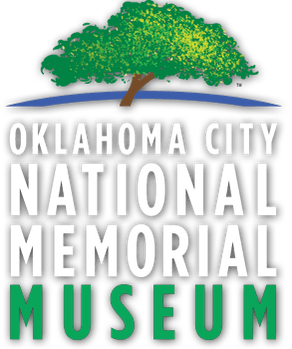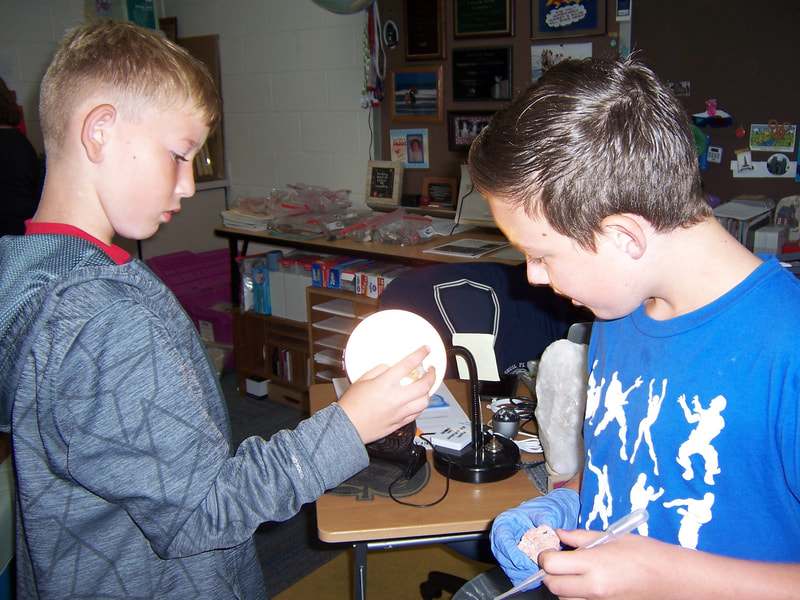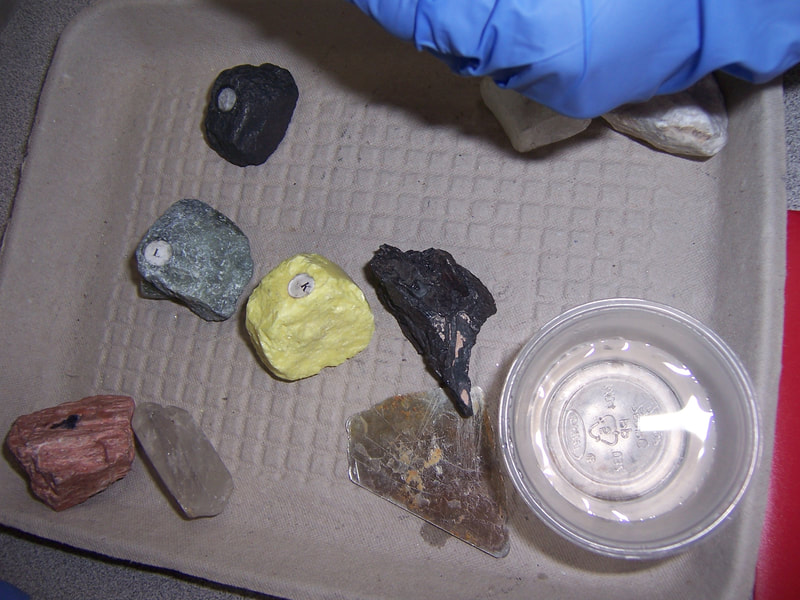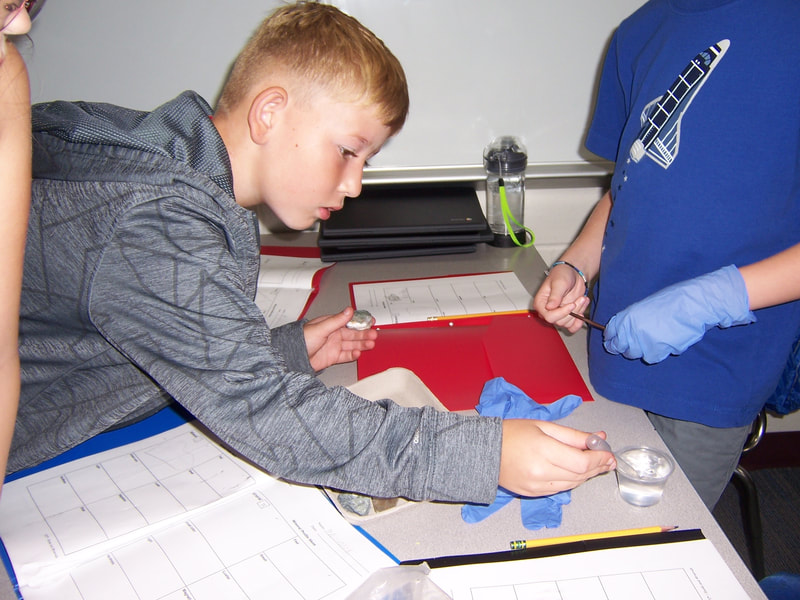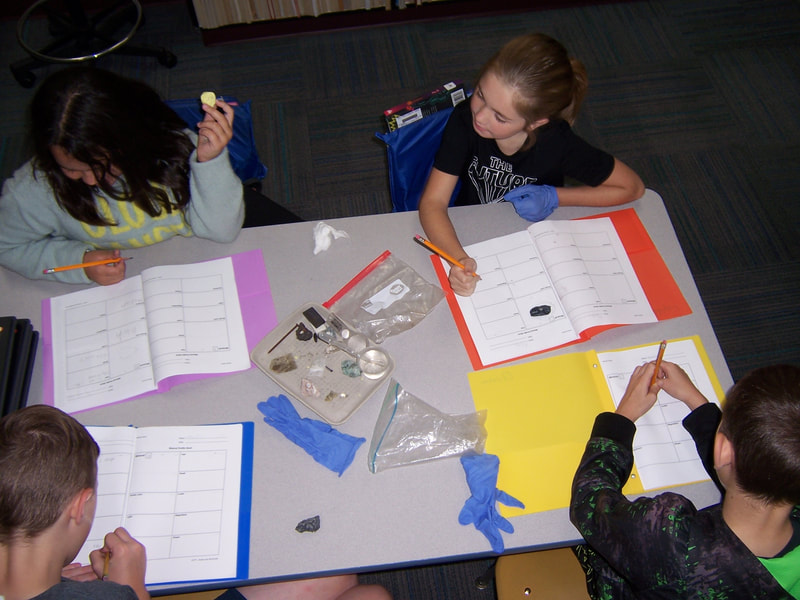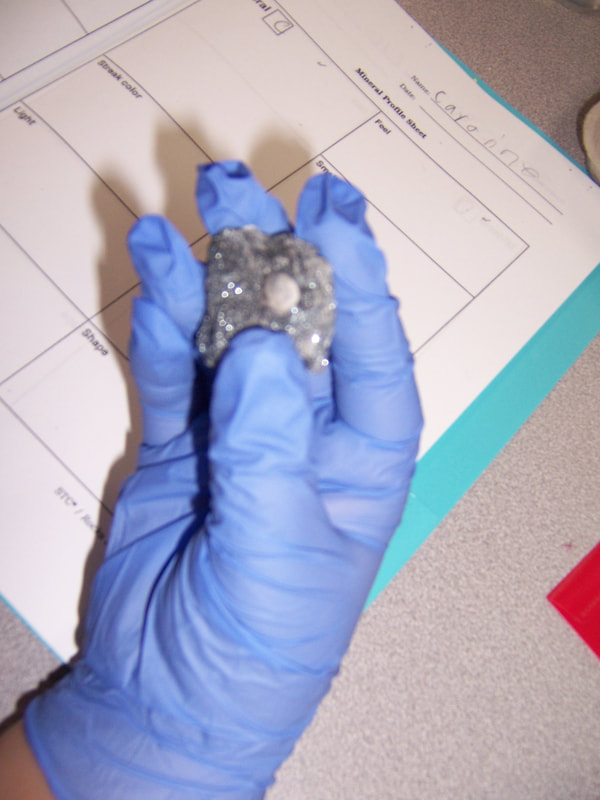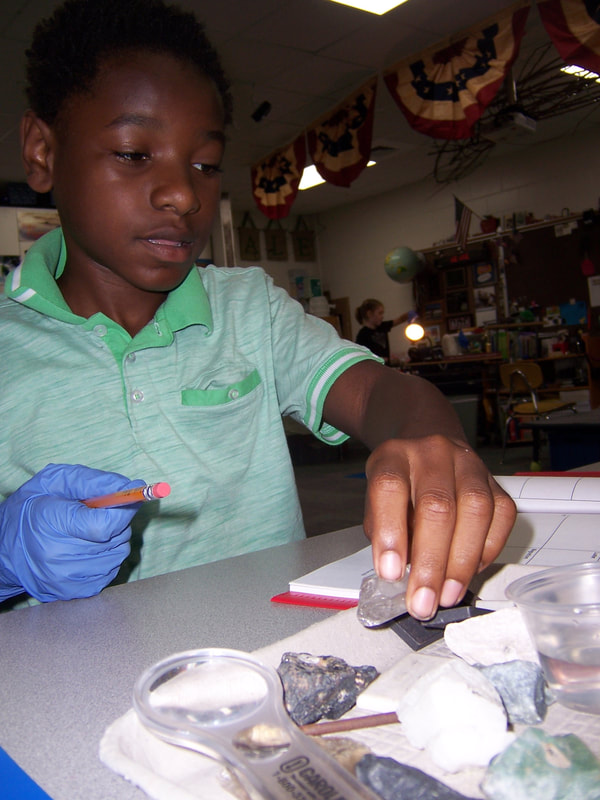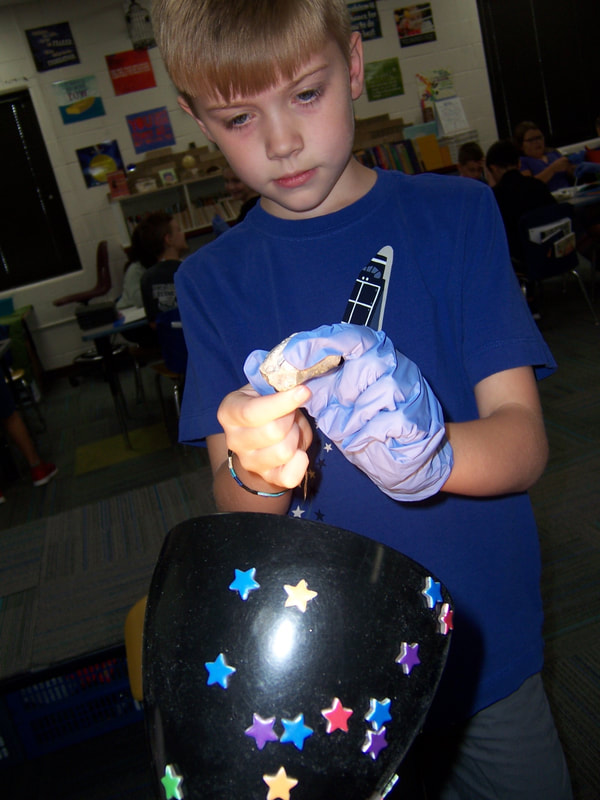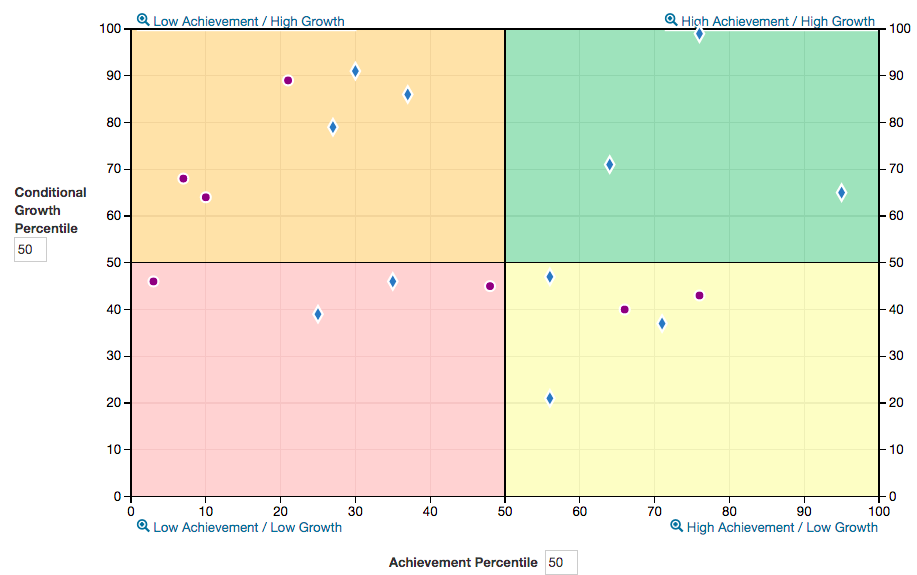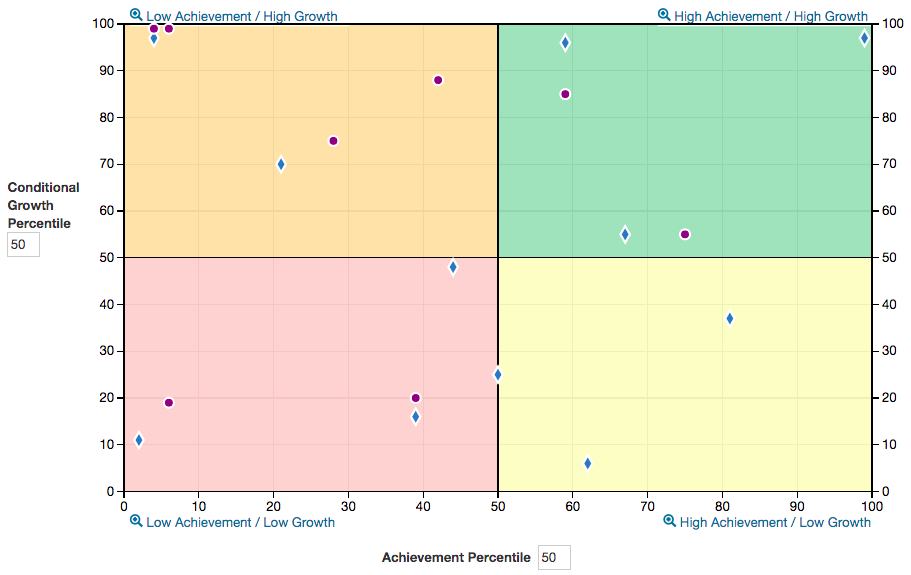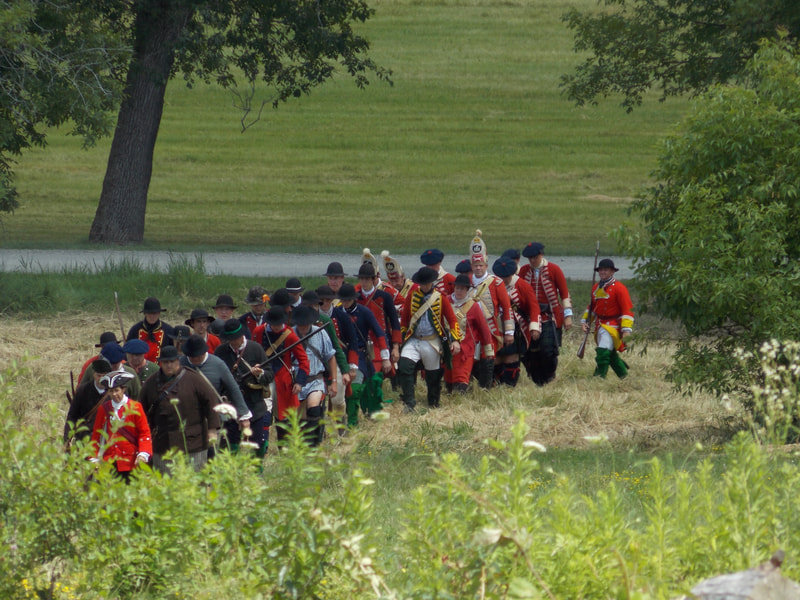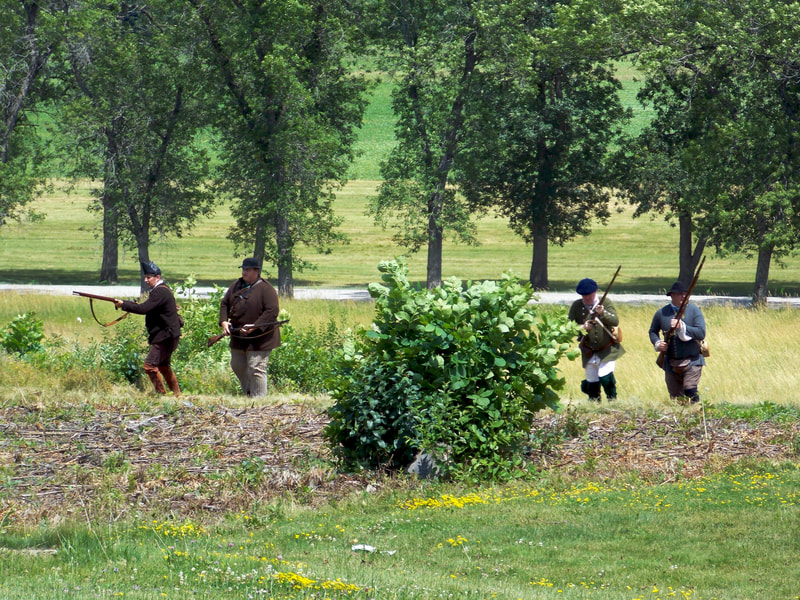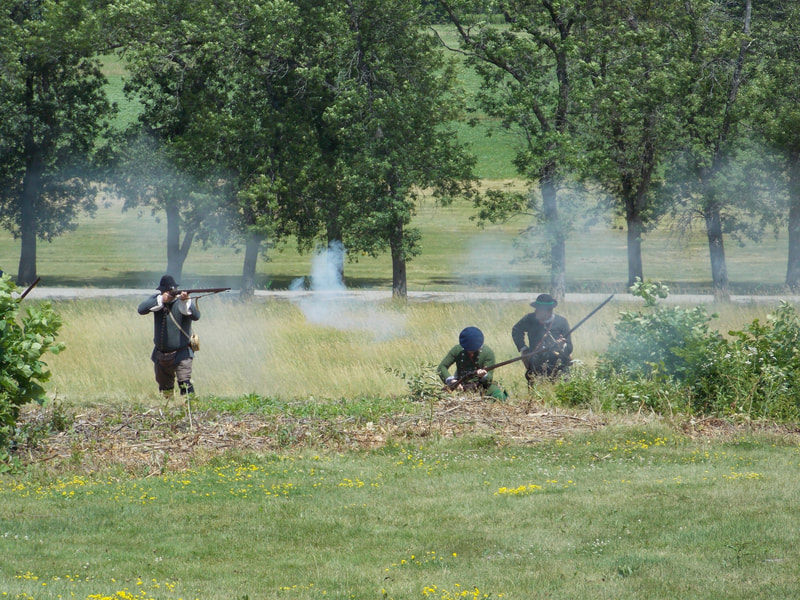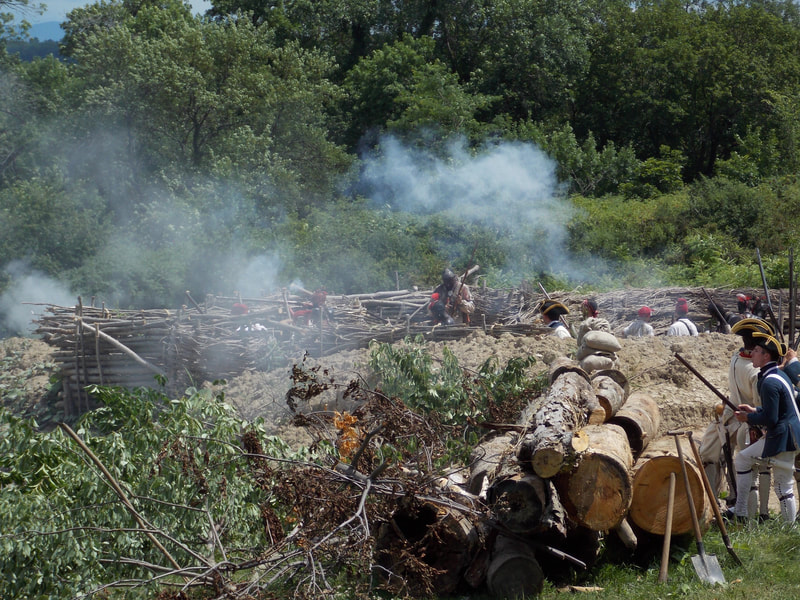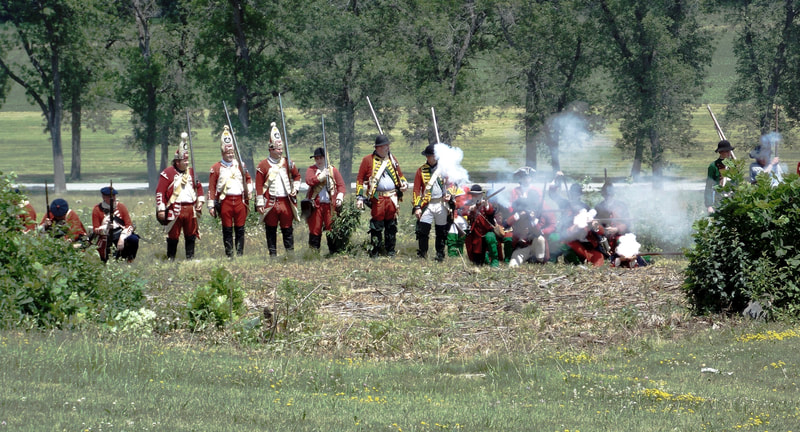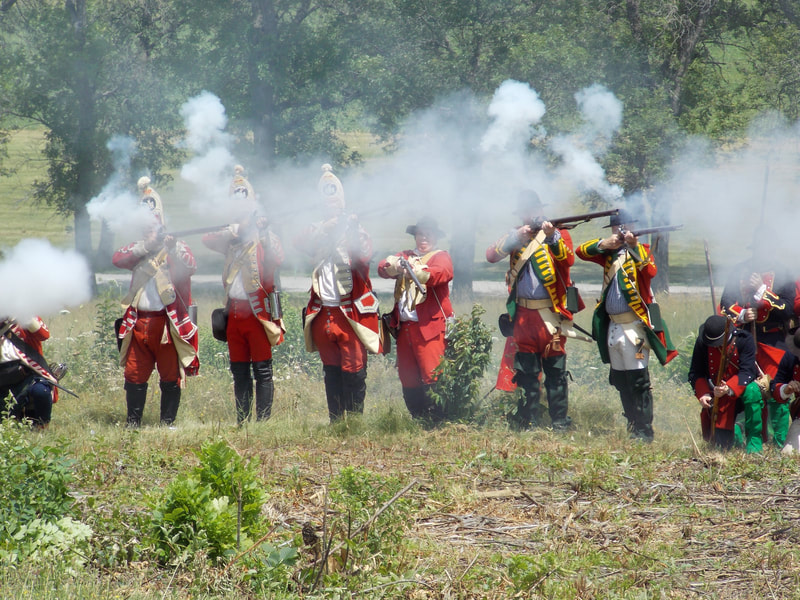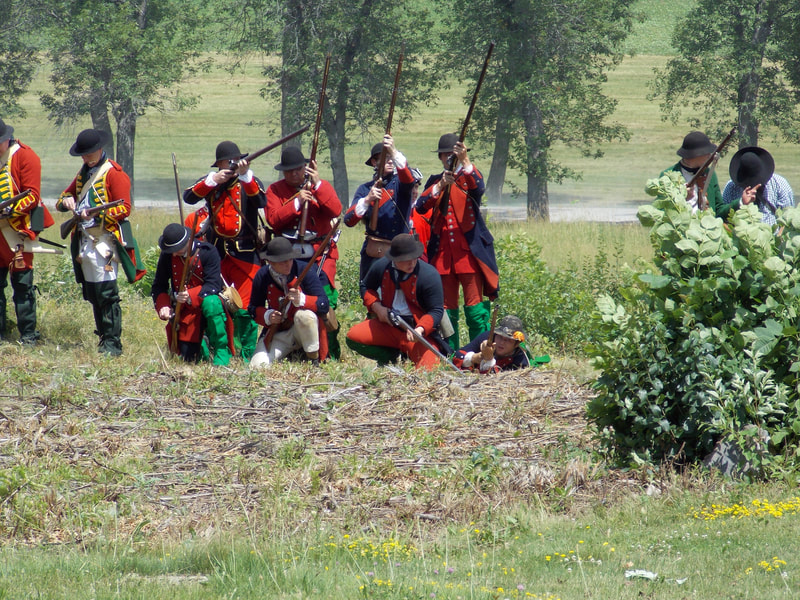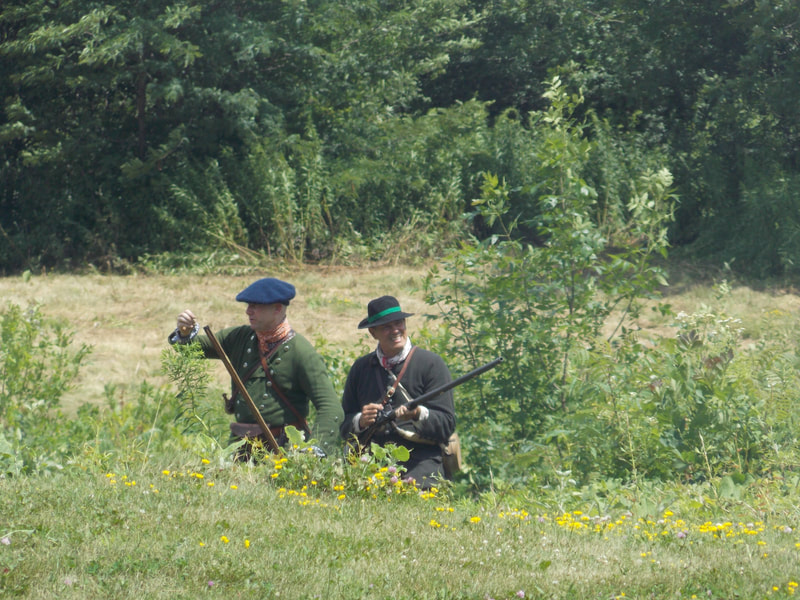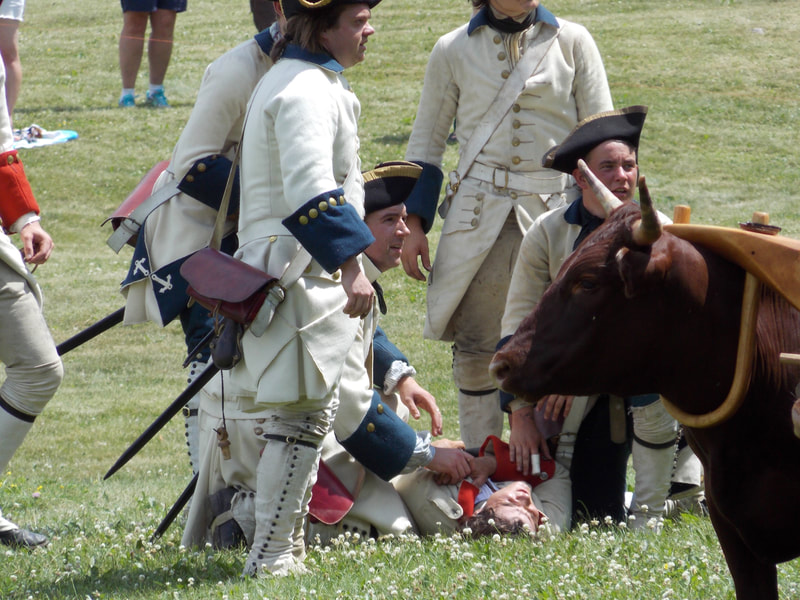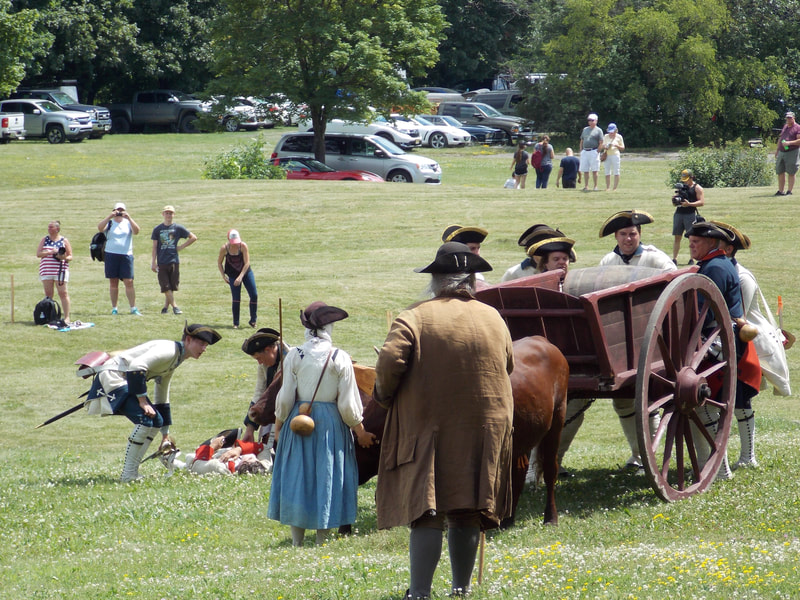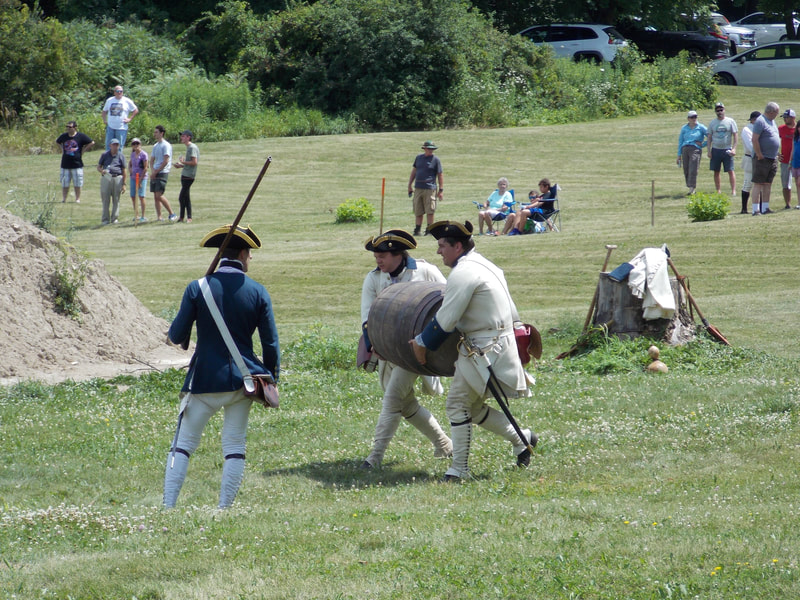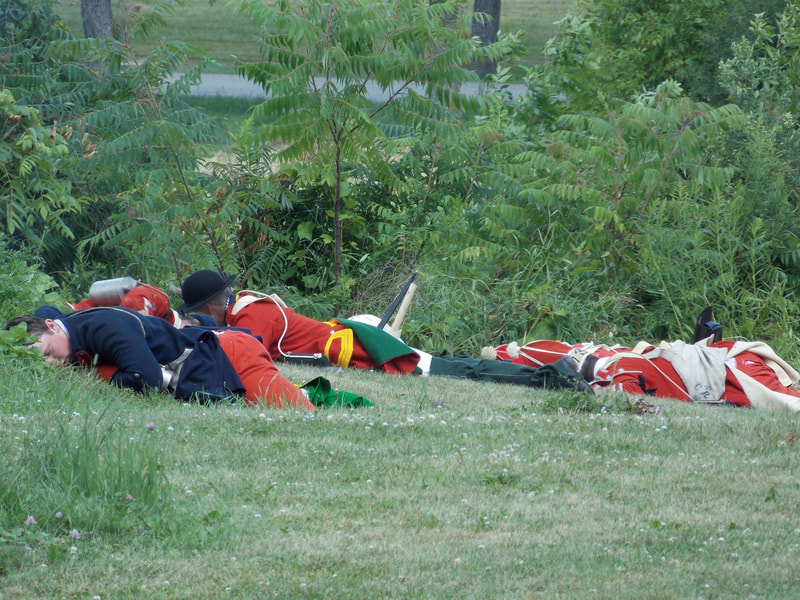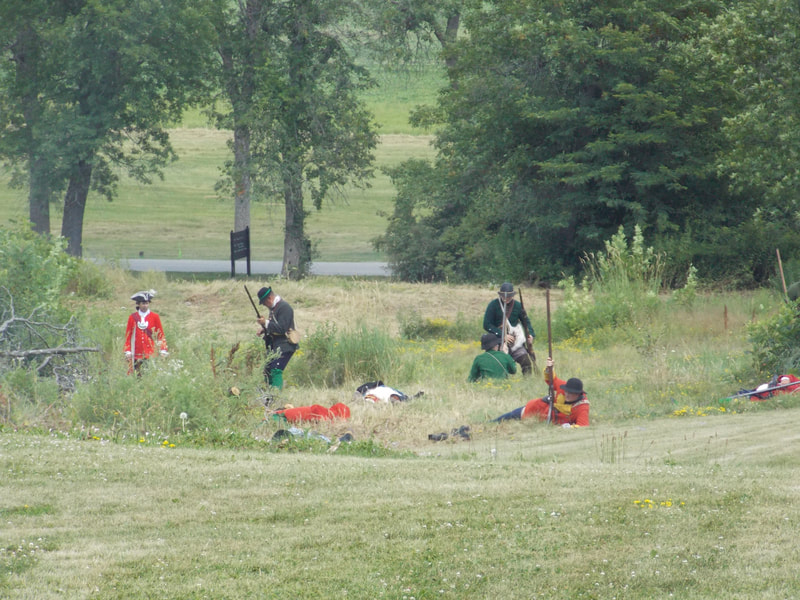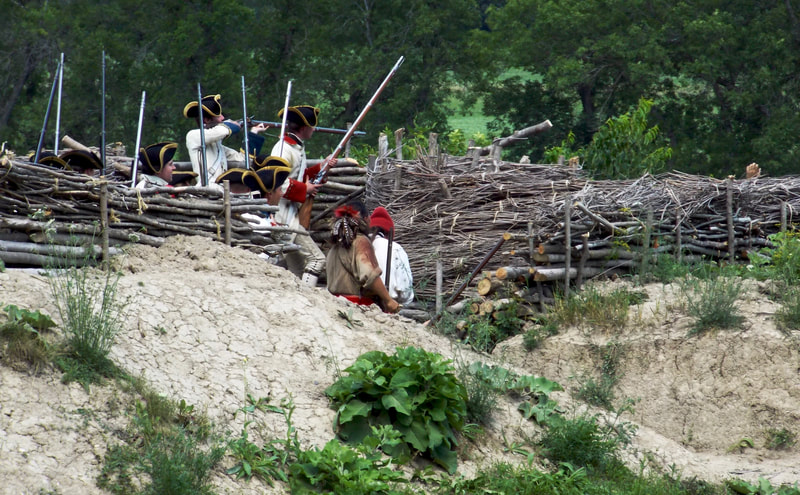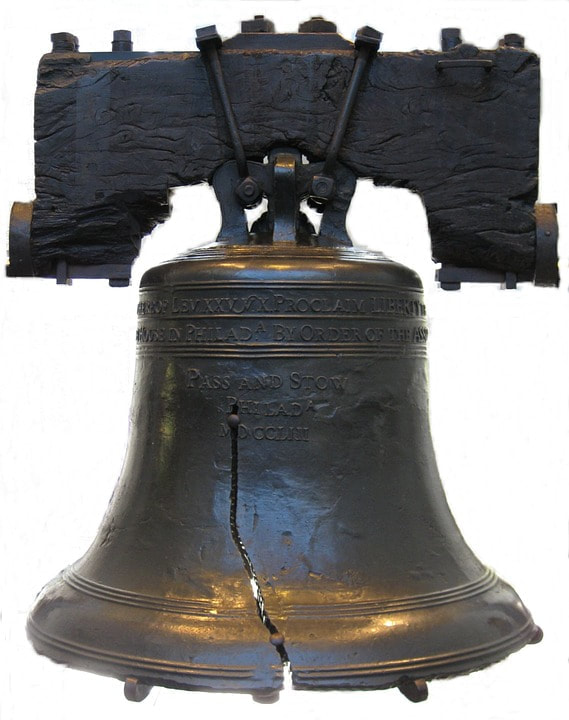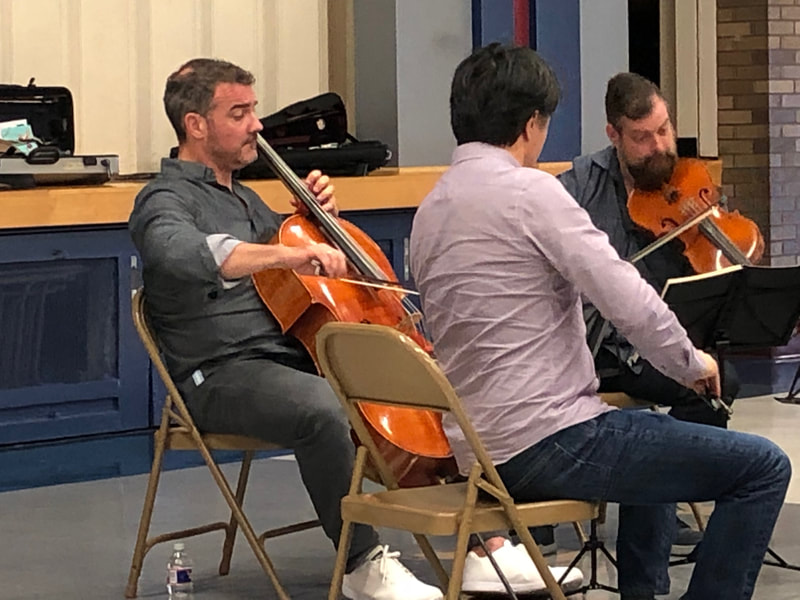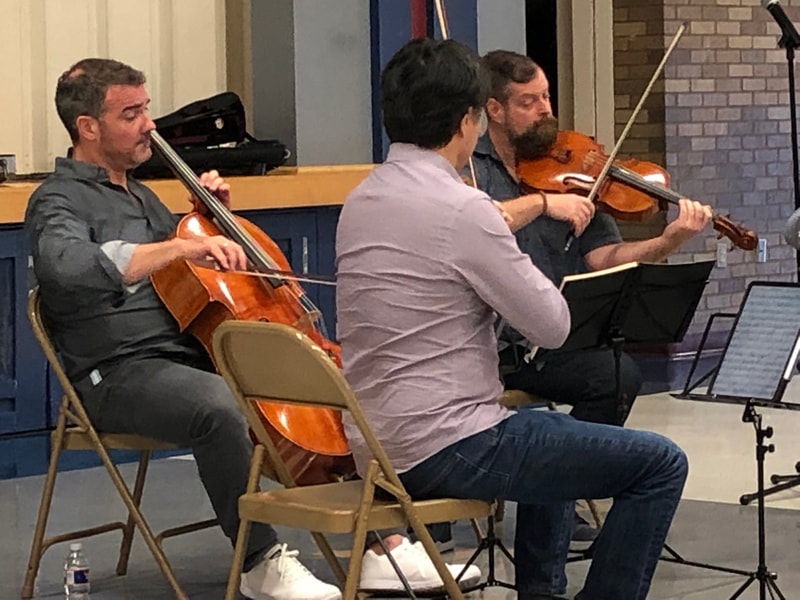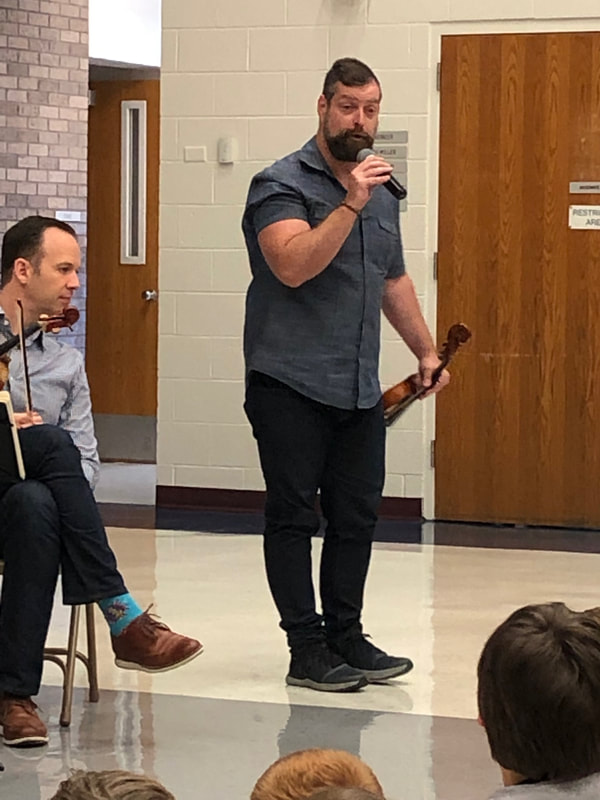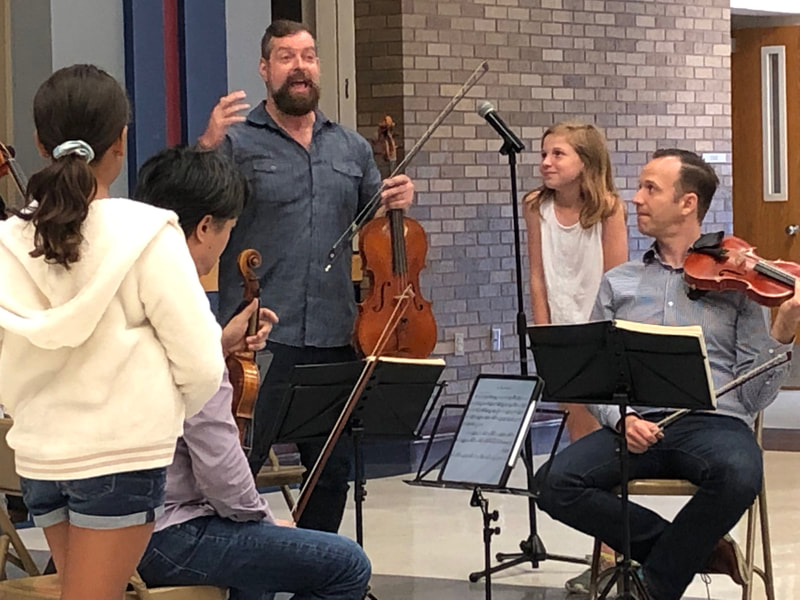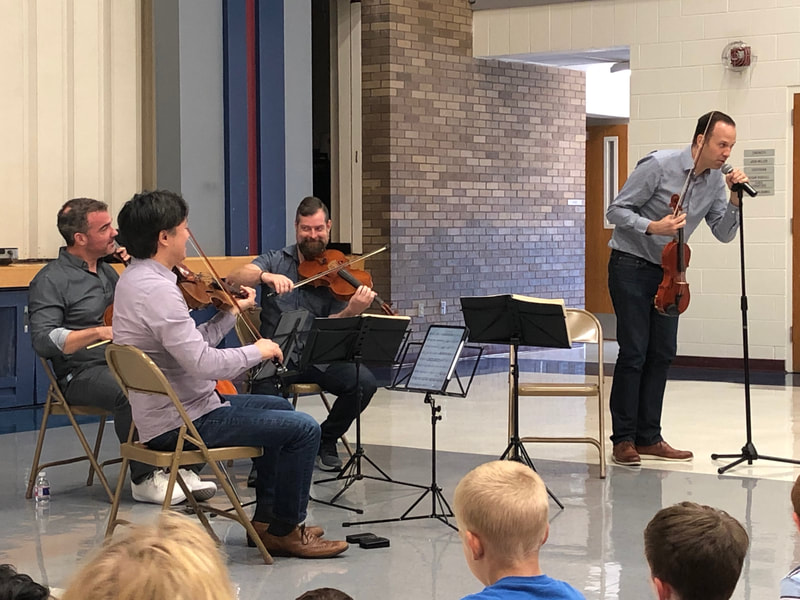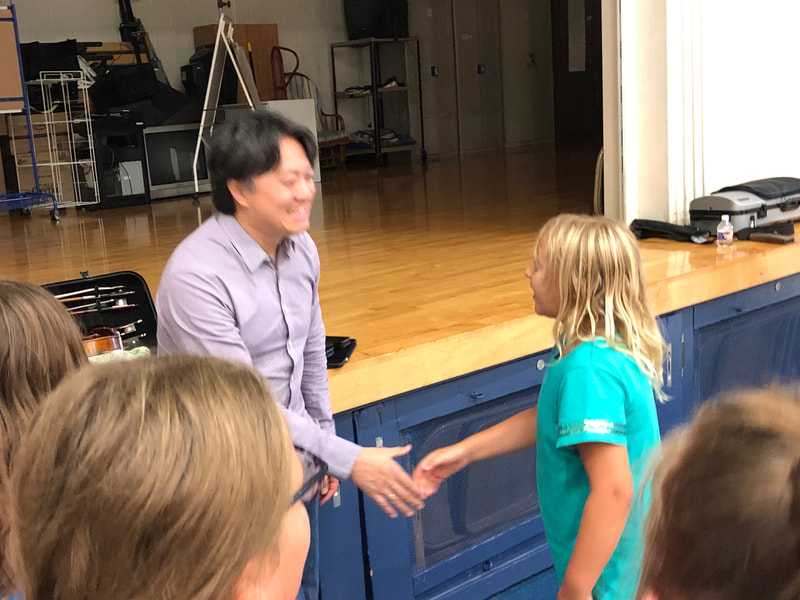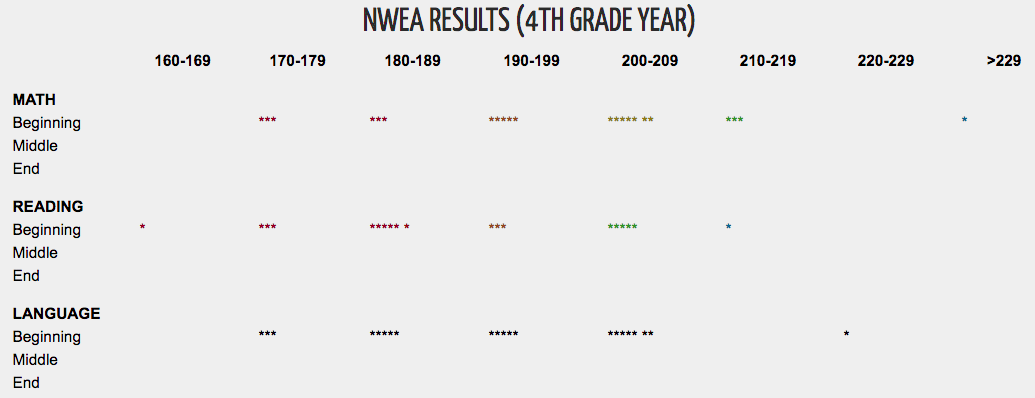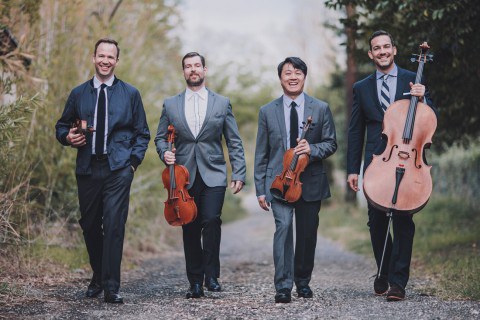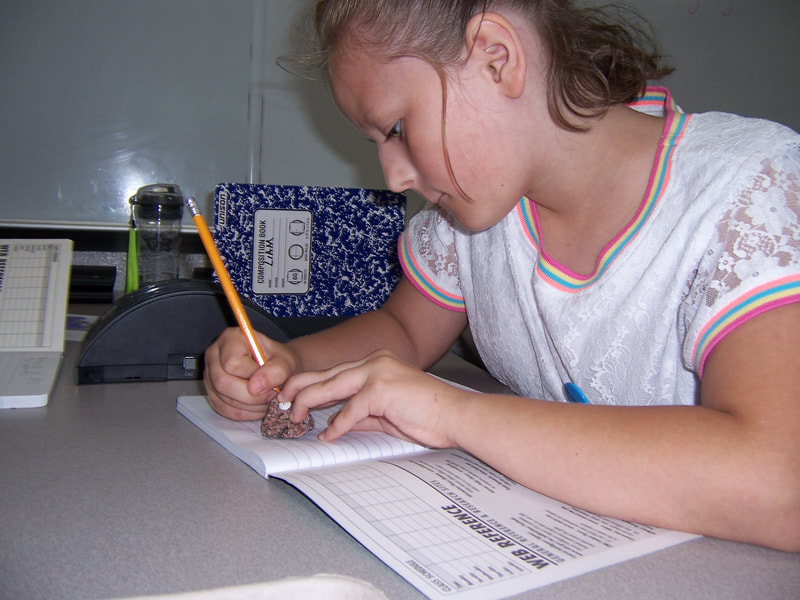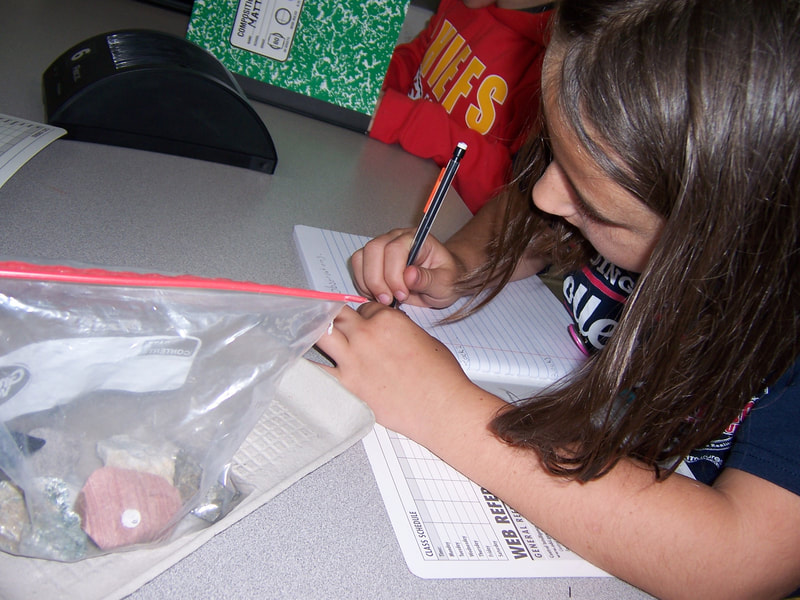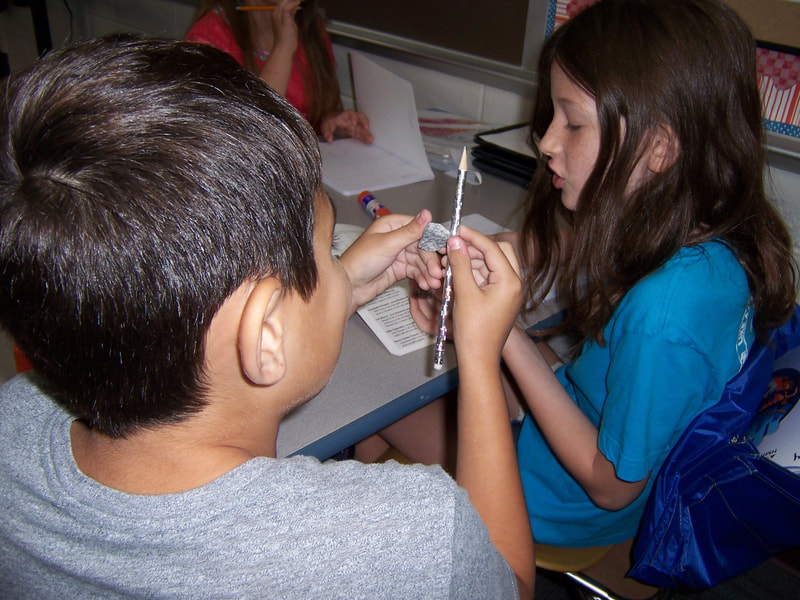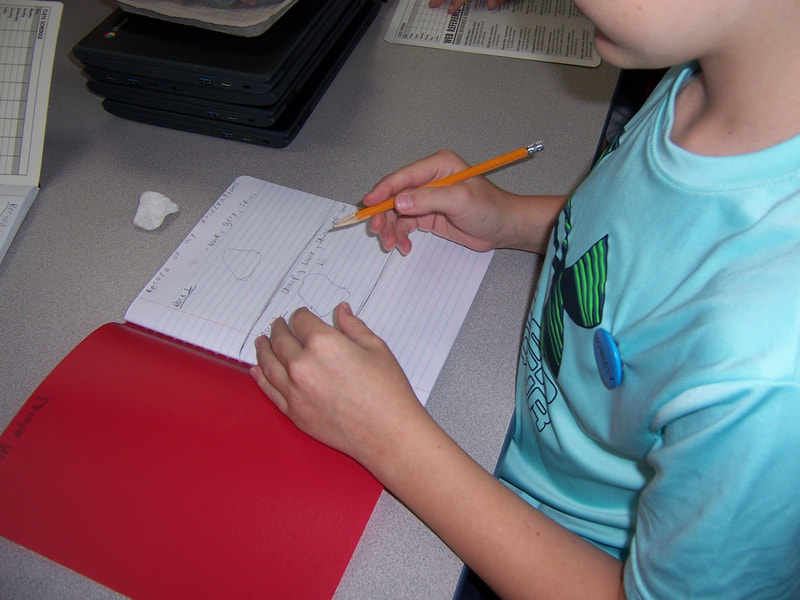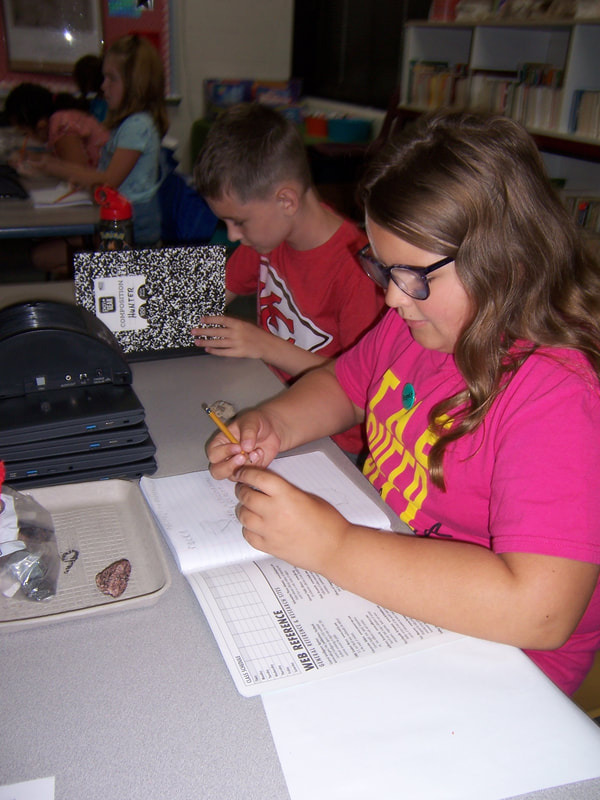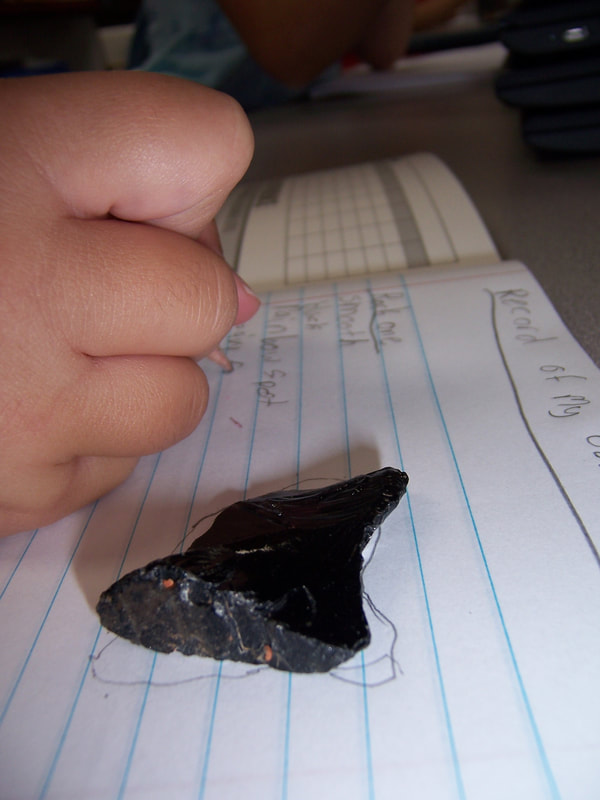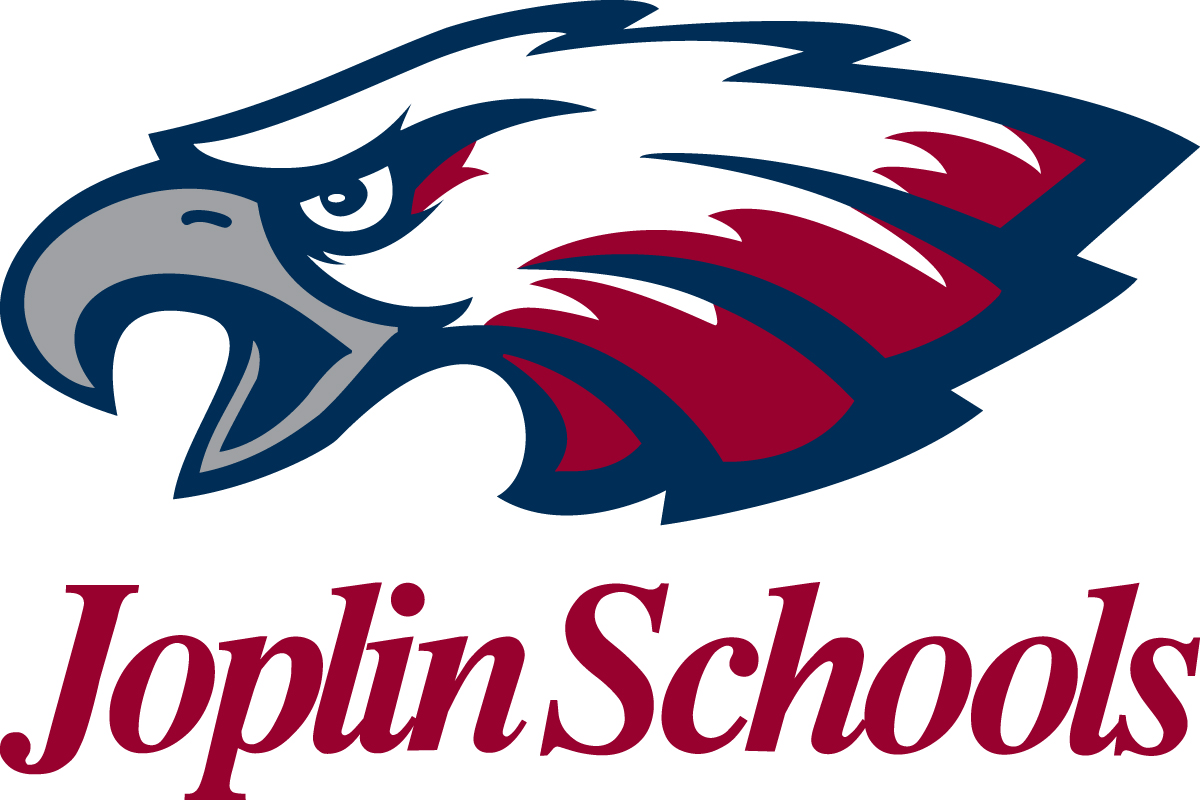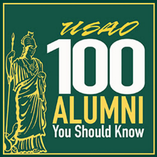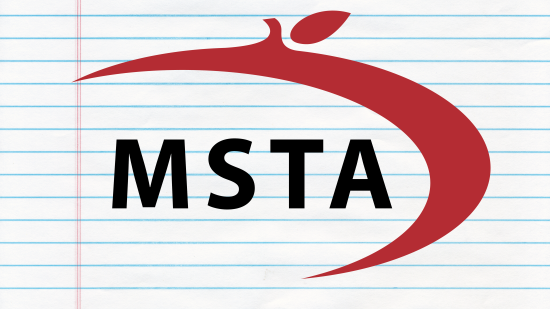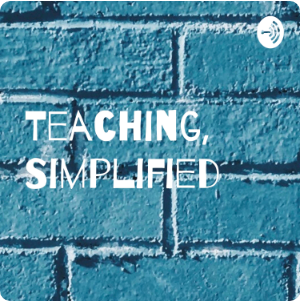| Another opportunity to greet visitors to our school came last week as the photographers arrived and set up their gear for taking school pictures. We just about made it to lunch time before our class was summoned to meet them on the stage for our turn in front of the camera. While waiting in line, our class was quiet and well-mannered, and when facing the photographer, each student struggled with getting his/her greeting in. Do I approach the photographer or pose behind the fake chair back? Do I greet the photographer before or after she snaps my picture? While we didn't want to hold up the process and make others late for their lunches, we still wished to present ourselves as hospitable people and make a great impression on our guest. No doubt, our class was a refreshing part of this photographer's day. She returned their smiles as they interacted with her. |
|
0 Comments
These also took part in the reenactment of the Battle of Carillon later in the day. It was interesting to see how they interacted with the French troops, though, after a century or two of wavering relationships. During the reenactment, they whooped and hollered in addition to firing their own muskets. For more about my experience at the Fort Ticonderoga Teacher Institute, go to my Fort Ticonderoga page.
The word has come to mean more than it was ever intended. In education, we generally define bullying as the emotional dominance of one person (or group) over another over time. There is more involved than just one kid being mean to another. And yet, the term bullying has certainly grown in popularity in the last several years. Is that because the actions of bullying have increased, or is it because the definition of the word has expanded to mean more than it really means?
That means we have a choice to make:
After all, the label in this case - bully - is usually used to indicate that someone is a victim. It places a sense of inferiority onto the recipient of the actions. The altercation becomes someone else's fault. It becomes a one-sided dispute. And that's hardly ever the cause. Parents, children, and educational professionals (not to mention lawmakers) must understand that one person hardly ever emotionally attacks another person unprovoked. That never excuses the action, but one must agree that disputes are hardly ever so lopsided. It is our responsibility to counsel with both sides of the problem. One of the mistakes we make is to put the two parties in the same room too early. We match them up in front of us, where one still feels the need to be the victim and the other feels the need to be on the defensive. Emotions are too aroused in such a situation. A second mistake we make is to make our children out to be victims unnecessarily. We make it acceptable, and even desirable to be be a victim. We create children who feel entitled to repercussion as if it is an award. We create children who think success comes from defeating a "bully" by using "the system", rather than by physical retaliation. A third mistake is to believe that the so-called bully is the only one who needs to be counseled. We need to provide the "victim" with resilience skills, in addition to helping the "bully" to alter his/her behavior. Calling a person bully - labeling a person as a bully - will never advance kindness and will only perpetuate the desire to continue with undesirable actions. By changing our terminology to address the real behaviors involved, we will immediately equip ourselves with more meaningful methods that address the specifics. Go to my Professional Pet Peeves page for more topics.
I've recently arranged, through three sources, to bring museums to our classroom. The first comes to us from the American Revolution Institute, located in Washington, DC. The second will come from the American Independence Museum in Exeter, NH. The third will arrive from the Oklahoma City National Memorial. I call these Reverse Field Trips, where the destination comes to us in the form of a trunk - a trunk containing virtual treasures that we can use to enhance our lessons and bring them to life in three dimensions. November 2019: American Revolution Institute The American Revolution Institute offers two trunks. The one we will receive in November will be the maritime trunk, which will help us understand that the Revolutionary War was not only fought on land. According to the description on the museum's website: This trunk highlights the importance of the Revolutionary War as a maritime conflict, which pitted the world’s two strongest naval powers—Britain and France—against each other for dominance of the seas. Resources in the trunk include introductions to key commanders of each navy, summaries of important naval battles of the Revolutionary War, and items related to the comparatively smaller Continental Navy and American privateers. The trunk also features items portraying life at sea for sailors, including reproduction clothing and primary source images that demonstrate the divide between naval officers and the common seamen who performed daily chores aboard ship. The trunk also includes materials about sleeping and eating conditions on ships and a reproduced copy of the first clinical trials testing treatments for scurvy. February, 2020: American Independence Museum We borrowed the traveling trunk from the American Independence Museum, last year, and had a lot of fun exploring the treasures within. Students got to hold some of the items and even got to try on some of them. Here are two posts I wrote to report about our experience: April 2020: Oklahoma City National Memorial
In the interest of transparency, here is a report that shows our class' performance on the NWEA test for the "fall" of 2019. There are a few things we can look at using these quadrant charts. For example, I might consider the achievement of my boys (blue diamonds) contrasted with the performance of my girls (blue circles). I might also consider what each quadrant is telling me at a glance. Anyone in the green has scored with high achievement and has improved at a rate that is higher than most others. The yellow section is for students who have higher percentile scores, but who have not improved at an average rate. The orange area shows students who have improved at a high rate, but who still post lower scores in comparison with their peers. The red section is home to pupils who have neither improved or achieved high levels. LanguageIn Language and Reading, the boys are alone in the green sections. ReadingThe area for Reading with the largest number of students is the red section, with some students posting extremely low scores and extremely poor improvement. MathThe area with the highest rate of improvement is definitely Math. This is also the area where we see more students racking up higher scores. As I've told my class, this is the year we turn some of these things around. This is the year that we can really show improvement for everybody. We certainly have a lot of room for it!
At the same time, it's going to take the effort of all of us to make it happen. The reenactment of the Battle of Carillon went into full swing as the British ascended the hill. They must not have known what kinds of barriers lay between them and the fort on the peninsula. The 30 to 40 musket-wielding men were a far cry from the 16,000 who would have really carried out the attack. It didn't take long for the battle to begin, but the British, in spite outnumbering the French (with their Indian allies) by at least four times, would never come close to taking the hill, let alone the fort
In the morning we had orders to move forward again, in a column three deep, in order to storm the enemy's breast-works, known in this country by the name of "the Old French Lines." Our orders were to "run to the breast-work, and get in if we could." But their lines were full, and they killed our men so fast, that we could not gain it. We got behind trees, logs and stumps, and covered ourselves as we could from the enemy's fire. The ground was strewn with the dead and dying. It happened that I got behind a white-oak stump, which was so small that I had to lay on my side, and stretch myself; the ball striking the ground within a hands' breadth of me every moment, and I could hear the men screaming, and see them dying all around me. I lay there some time. A man could not stand erect, without being hit, any more than he could stand out in a shower, without having drops of rain fall upon him; for the balls come by hands full. It was a clear day - a little air stirring. Once in a while the enemy would cease firing a minute or two, to have the smoke clear away, so that they might take better aim. In one of these intervals I sprang from my perilous situation, and gained a stand which I thought would be more secure, behind a large pine log, where several of my comrades had already taken shelter: but the balls came here as thick as ever. One of the men raised his head a little above the log, and a ball struck him in the centre of the forehead, and tore up his scalp clear back to the crown. He darted back, and the blood ran merrily; and rubbing his face, said it was a bad blow, and no one was disposed to deny it, for he looked bad enough. We lay there till near sunset; and, not receiving orders from any officer, the men crept off leaving all the dead, and most of the wounded. You can read more about the teacher institute on my Fort Ticonderoga page.
(Liberty) Bell Work
THREE BRANCHES
More About MadisonHere are some short explanations of James Madison's accomplishments. They both portray some of the same information. Who do you think is the primary audience for each video? Which appeals to you more? Why?
James and Dolley Madison were the nation's first power couple, and Dolley was the first to be named first lady of the United States. Find more about the fourth president's wife in these clips:
Maybe you have seen some Dolly Madison Bakery products for sale (Notice the difference in spelling.). What might you conclude, from the videos above, would prompt a bakery to put Mrs. Madison's name on its product?
Find more videos like this one on our Music Appreciation page.
We are privileged to take part in the audience for Pro Musica, every year. This year's string quartet visited our school on Wednesday. Joshua, Daniel, John, and Will, the members of Miró performed classical music and talked about their instruments, the instrumentation of the compositions they play, and about the dynamics of their quartet. It was obvious that these guys have fun and exchange some degree of ribbing amongst themselves. They demonstrated that classical music is not just a presentation of stodgy notes from long-haired, dead guys. Our class researched the group's website before attending the mini-concert in the auditorium. Students had questions ready for the gentlemen if given the opportunity to ask. CAROLINE was privileged to ask her question, which involved the name of the group - Miró - which comes from a Spanish artist.
As you can tell from the videos here, Miró also gave a demonstration of the versatility of their instruments, magically transforming them into fiddles for the final number and playing the Orange Blossom Special (We were going to ask, knowing that one of the four also played in a Country/Western group for some time.). The icing on the cake came at the end of the session. As other classes were departing and our musicians were packing their instruments to leave, I gave my students permission to approach them and greet them. This comes as a surprise to visitors, as 23 fourth graders descend on them to firmly shake their hands and look them in the eye. If students did not get to ask their questions during the presentation, they certainly did now, and it was great to hear them interacting with the adults in real conversations. Prepared and armed with respectful questions, they made a positive impression on our visitors. Look at these pictures and be impressed with their eye contact! As timid as they may have been at first, after a few minutes, I had a difficult time pulling my students away from the performers to allow them to pack their instruments. With a final show of gratitude to our guests, we left knowing that this was more than an simple lesson in greeting others - one of the four core behaviors of our school district - but that we had just successfully and seriously interacted on a new level.
 I've been looking forward to this week. This was my chance to see what I have - officially - at my disposal, this year. I still feel like we are getting used to each other in our class, and my students are finally understanding what I expect from them, but now I have three numbers for each student, gauging their academic knowledge and performance. We do this by using the standardized, predictive tests coordinated by the Northwest Evaluation Association. These tests - in math, reading, and language arts - are administered three times a year, and they give us a pretty good picture of how our students will perform on the state-mandated test in the spring. Though we have some students who have not finished, here are the results for last week's battery of tests so far: I'm keeping tabs on improvement, so in the chart above, I will add scores as we retake the NWEA test at the midyear and end-of-year points. Stay tuned to see how we grow! These results show some general ideas of where students are beginning the year. For Math, we want to end up with scores above 210, and in Reading and Language, I'd like to see them over 200. As you can see, we have a few students who have already reached these levels, and a few others who are within striking distance. For others, I'm just looking for improvement, this year; it would be nice for everyone to meet the threshold scores, but if we can get them closer, they might be in a better position to match minimum scores in the fifth grade. Interestingly, the Missouri Assessment Program test from last spring (See below.) shows seems to coincide with the results above. However, as I have told my peers and my students, this is the year we make progress. Stay tuned to see how we grow!
As for our class, we will research this group prior to their visit. We will use the information on their website to find out more about each member of the quartet. Students should learn the names of our guests and be prepared to greet them with hardy handshakes, warm smiles, and brief conversation. This will the first authentic opportunity to use these "soft" skills with people from outside of our school, and it will provide us with a rich experience involving more than just a concert.
Rocks in front of us, senses on high alert, students recorded observations on paper. Working together with their peers, they had to look at, smell, and feel their rock samples.
We're on our way to learning more about the rock cycle. We're also anticipating working with minerals - not only smelling and looking at them, but also performing more tests, real geological tests on our samples. Soon students will understand hardness, cleavage, reflection, streak, color, translucence, and more. |
AnthemThe Hoggatteer Revolution
is an extensive, award-winning, inimitable, digital platform for Encouraging and Developing the Arts, Sciences, and honest Christianity in the beautiful, friendly LAND OF THE FREE AND THE HOME OF THE BRAVE This site is described as
"a fantastic site... chockablock full of interesting ideas, hilarious anecdotes, and useful resources." 
...to like, bookmark, pin,
tweet, and share about the site... and check in regularly for new material, posted often before DAWN'S EARLY LIGHT! History in ResidenceElementary Schools: Bring Mr. Hoggatt into your classroom for a week of engaging and rigorous history programming with your students. LEARN MORE BUILDING BETTER
|
